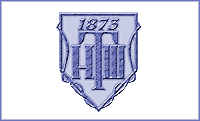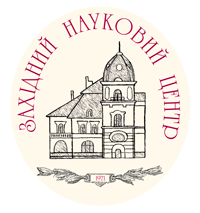Tanya SAVCHUK, Svitlana KOROLCHUK
Lesya Ukrainka Volyn National University, Voli ave., 13, 43025 Lutsk, Ukraine, е-mail: savchuk.tanja@vnu.edu.ua
DOI: https://doi.org/10.37827/ntsh.chem.2025.78.069
APPLICATION OF CHROMATOGRAPHY METHODS IN THE ANALYSIS OF WATER AND FOOD PRODUCTS
This paper provides a comprehensive overview of chromatographic analysis methods and their application in the fields of food safety and environmental monitoring. The classification of chromatographic techniques has been reviewed in detail, focusing on their analytical capabilities, sensitivity, and specificity. Special attention is given to the determination of trace amounts of heavy metals and pesticide residues in water and food samples. Ion chromatography (IC) and reversed-phase high-performance liquid chromatography (RP-HPLC) are highlighted as the most frequently used techniques for detecting heavy metals in aqueous media. These methods offer high sensitivity, selectivity, and compatibility with various detection systems such as conductivity detectors and inductively coupled plasma optical emission spectrometry (ICP-OES). IC is also effectively used in the analysis of radioactive components in food products, particularly when evaluating environmental contamination. Gas chromatography (GC), especially when coupled with mass spectrometry (GC-MS), is widely applied for the identification of volatile and non-polar pesticides in food and environmental samples. For moderately polar pesticides, liquid chromatography (LC) is preferred due to its ability to separate a wide range of compounds with different polarities. Highly polar anionic pesticides can be reliably detected using ion chromatography. In some cases, a combination of analytical techniques is required to achieve comprehensive identification and quantification of complex mixtures or co-eluting compounds. The study emphasizes the significance of chromatographic methods in ensuring compliance with maximum allowable concentration (MAC) standards for hazardous substances in food and water. Their implementation plays a crucial role in protecting public health, supporting regulatory frameworks, and advancing analytical science.
Keywords: chromatography, analytical methods, heavy metals, pesticides, maximum allowable concentration, water analysis, food safety.
References:
-
1. Minaieva V. O. Chromatographic Analysis. – Cherkasy: Vyd. vid. ChNU imeni Bohdana Khmelnytskoho, 2013. 284 р.
(in Ukrainian).
2. Skoog D.A., Holler F.J., Crouch S.R. Principles of instrumental analysis – Belmont: Brooks/Cole, 2017. 672 p.
3. Felinger A., Felinger A. Jr. Advances in chromatography and mass spectrometry. – Amsterdam: Elsevier, 2020. 432
p.
4. Beyer, L. Chromatography. Fundamentals and Applications of Chromatography and Related Differential Migration
Methods. – Hoboken: Wiley, 2013. 430 p.
5. Snyder L.R., Kirkland J.J., Dolan J.W. Introduction to modern liquid chromatography. – Hoboken: Wiley, 2011.
528 p.
6. Gross M.L. Mass spectrometry: a textbook. – Berlin : Springer, 2017. 606 p.
7. Fedorchenko S. V. Chromatographic analysis method. Prykarp. nats. un-t im. V. Stefanyka, 2012. 146 s. (in
Ukrainian).
8. Ettre, L.S. Chapters in the Evolution of Chromatography. Imperial College Press, 2008. 520 p.
9. Honcharuk V.T. Water Chemistry and Water Treatment. – Kyiv: Naukova Dumka, 2016. 432 р. (in Ukrainian).
10. Shvaika О.L. Analytical Methods for Food Quality Control. – Lviv: vydavnytstvo LNU, 2020. 240 р. (in
Ukrainian).
11. Batterham G., Munksgaard N., Parry D. Determination of Metals in Seawater by Inductively Couplet Plasma Mass
Spectrometry After Off-line Dithiocarbamate Solvent Extraction. J. Anal. Atomic Spectrometry. 1997. Vol. 12. P.
1277–1280. (https://doi.org/10.1039/a704309k).
12. Vakh I., Podtynnykh V., Andrieieva O., Bakulin O. Neutron Activation Analysis (NAA) Based on a Research
Reactor DR-100. Lviv: Visnyk Lviv Univ. Ser. Fiz. 2009. Vol. 44. P. 294–299. (in Ukrainian).
13. Snytinskyi V. V., Khirivskyi P. R., Hnativ P. S. Ecotoxicology. Kherson: Oldi-plius, 2011. 330 р. (in
Ukrainian).
14. Michalski R. Ion Chromatography Applications in Wastewater Analysis. Separations. 2018. Vol. 5(1). Р. 16–28.
https://doi:org/10.3390/separations5010016.
15. Hu, Q., Yang, G., Zhao, Y. & Yin, J. Determination of copper, nickel, cobalt, silver, lead, cadmium, and
mercury ions in water by solid phase extraction and the RP HPLC with UV Vis detection. Analytical and
Bioanalytical Chemistry. 2003. Vol. 375(6). Р. 831–835. https://doi:org/10.1007/s00216-003-1828-y.
16. Hu Q., Yang G., Yang J., Yin J. Study on determination of iron, cobalt, nickel, copper, zinc and manganese in
drinking water by solid phase extraction and RP HPLC with 2 (2 quinolinylazo) 5 diethylaminophenol as precolumn
derivatizing reagent. J. Environ. Monit. 2002. Vol. 4. P. 956–959. https://doi:org/10.1039/B204874B.
17. Hu Q., Yang G., Yin J. Determination of trace lead, cadmium and mercury by on line column enrichment followed
by RP HPLC as metal-tetra-(4-bromophenyl)-porphyrin chelates. Talanta. 2002. Vol. 57(4). P. 751–756.
https://doi:org/10.1016/S0039-9140(02)00469-1.
18. Hutchins S.R., Haddad P.R., Dilli S. Reversed phase high performance liquid chromatography of
diethyldithiocarbamate complexes using radial compression columns. Analytical Chemistry. 1999. Vol. 71(2). P.
185–192. https://doi:org/10.1021/ac00231a018.
19. Polumbryk M. O., Osypenkova I. I., Kotliar Ye. O. Physicochemical Methods for Food Product Research.
Cherkasy-Odesa-Kyiv: Lohos, 2019. 188 р. (in Ukrainian).
20. Cobb J., Warwick P., Carpenter R., Morrison R. Determination of strontium-90 in milk samples using a
controlled precipitation clean-up step prior to ionchromatography. Science of The Total Environment. 1995. Vol.
173–174. P. 179–186. https://doi.org/10.1016/0048-9697(95)04777-8.
21. Fredrikson M., Carlsson N., Almgren A., Sandberg A. Simultaneous and Sensitive Analysis of Cu, Ni, Zn, Co, Mn,
and Fe in Food and Biological Samples by Ion Chromatography. Journal Agric Food Chem. 2001. Vol 50. P. 59–65.
https://doi.org/10.1021/jf010792w.
22. Gangal N.D., Bondre S.S., Ramanathan P.S. Determination of some pesticides and intermediates by ion
chromatography. Journal of Chromatography A. 2000. Vol. 884. P. 243–249.
https://doi.org/10.1016/S0021-9673(00)00305-8.
23. Kandler W., Nadubinskа M., Parich A., Krska R. Determination of moniliformin in maize by ion chromatography.
Anal Bioanal Chem. 2002. Vol. 374. P. 1086–1090. https://doi.org/10.1007/s00216-002-1565-7.
24. Chmil V. D., Holokhova O. V., Vidrin D. Yu., Kalashnikov A. A. Prospective Use of the Method KETCHERS
(QuEChERS) for Assessing Toxicological Safety of Food Products. Problemy kharchuvannia. 2016. Vol. 2. P. 69–74.
(in Ukrainian).
25. Chamrasem N., Lee S., Harmon T. Analysis of 19 PCB congeners in catfish tissue using a modified QuEChERS
method with GC-MS/MS. Food Chem. 2016. Vol. 192. P. 900–906. http://dx.doi.org/10.1016/j.foodchem.2015.07.088.
26. Іsotope-ratio mass spectrometry. URL: (https://en.wikipedia.org/wiki/Isotope-ratio_mass_spectrometry). Date of
appeal: 16.06.2025 (in Ukrainian).
27. Lehotay S., Hajslova J. Application of gas chromatography in food analysis. TrAC Trends in Analytical
Chemistry. 2002. Vol. 23. P. 686–697. https://doi.org/10.1016/S0165-9936(02)00805-1.
28. Using chromatography to study to study microplastics in food: an interview. URL:
(https://www.chromatographyonline.com/view/using-chromatography-to-study-microplastics-in-food-an-interview-with-jose-bernal)
29. Fechner A., Schiller A., Franzke J. Recent progress in food flavor analysis using GC IMS coupled to
chromatography. Analytica Chimica Acta. 2025. Vol. 1358. P. 331–343. https://doi.org/10.1016/j.aca.2025.343946.
30. Karachov I. I., Fokin V. M., Datsenko V. I. Current issues of metrological assurance for radiation control of
food products. Kyiv: Hihiiena naselenykh mists. 2007. Vol. 50. P. 286–291. (in Ukrainian).
31. Dubinina A.A., Maliuk L.P., Seliutina H.A., Shaporova T.M., Kononenko L.V., Naumenko V.A. Toxic substances in
food products and methods for their determination. Kyiv: Profesional, 2007. 384 p. (in Ukrainian).
32. Food contaminants: types and harmfulness. URL: https://osvita.ua/vnz/reports/ecology/21054/ Date of appeal:
26.11.2021 (in Ukrainian).
33. Chen J., Li Y., Wang M. et al. Analysis of environmental pollutants using ion chromatography mass
spectrometry: a review of recent progress. Journal of Chromatography A. 2023. Vol. 1725. P. 463-480.
https://doi.org/10.1016/j.chroma.2023.463480.
34. Santana-Mayor A., Rodríguez-Ramos R.R., Herrera-Herrera A.A.V., Socas-Rodríguez B. Updated overview of
QuEChERS applications in food, environmental and biological analysis TrAC Trends in Analytical Chemistry. 2023.
Vol. 164. 117–125. https://doi/org/10.1016/j.trac.2023.117375.
35. 2023 ACS Presentation-Utilizing the QuEChERS sample preparation approach for targeted analysis of pesticides
in complex ecoltoxicology matrices. URL:
https://www.smithers.com/resources/2023/august/quechers-sample-preparation-analysis-pesticides Date of appeal:
06.06.2025.
36. Isah Yusuf Shinkafi, Abubakar Lawal, Nura Suleiman Gwaram, Ahmed Lawal Mashi. Recent review of the QuEChERS
sample preparation method for food and environmental sample analysis. FJS. 2024. Vol. 8(6). P. 155–169.
https://doi.org/10.33003/fjs-2024-0806-2957.
37. Lai L., Yan F., Chen G., Huang Y., Huang L., Li D. Recent progress on fluorescent probes in heavy metal
determinations for food safety: a review. Molecules. 2023. Vol. 28(15). P. 56–89.
https://doi.org/10.3390/molecules28155689.
How to Cite
SAVCHUK T., KOROLCHUK S. APPLICATION OF CHROMATOGRAPHY METHODS IN THE ANALYSIS OF WATER AND FOOD PRODUCTS. Proc. Shevchenko Sci. Soc. Chem. Sci. 2025. Vol. 78. P. 69-79.

